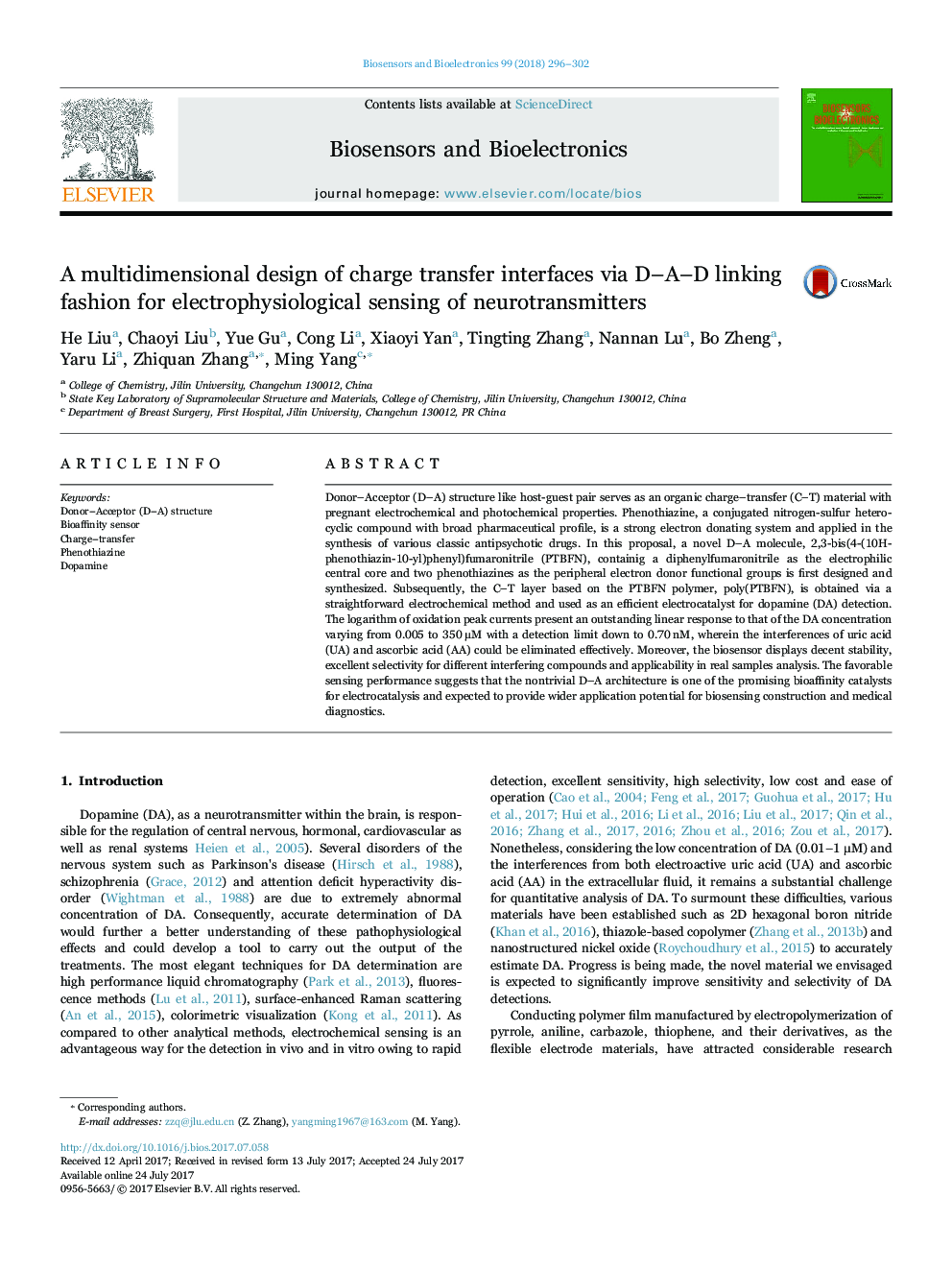| Article ID | Journal | Published Year | Pages | File Type |
|---|---|---|---|---|
| 5031342 | Biosensors and Bioelectronics | 2018 | 7 Pages |
â¢D-A structure biosensor is ultrasensitive due to amplification by the collective current signal.â¢Bioaffinity recognition of phenothiazine-based assays.â¢Future prospects to improve the biosensors are provided.
Donor-Acceptor (D-A) structure like host-guest pair serves as an organic charge-transfer (C-T) material with pregnant electrochemical and photochemical properties. Phenothiazine, a conjugated nitrogen-sulfur heterocyclic compound with broad pharmaceutical profile, is a strong electron donating system and applied in the synthesis of various classic antipsychotic drugs. In this proposal, a novel D-A molecule, 2,3-bis(4-(10H-phenothiazin-10-yl)phenyl)fumaronitrile (PTBFN), containig a diphenylfumaronitrile as the electrophilic central core and two phenothiazines as the peripheral electron donor functional groups is first designed and synthesized. Subsequently, the C-T layer based on the PTBFN polymer, poly(PTBFN), is obtained via a straightforward electrochemical method and used as an efficient electrocatalyst for dopamine (DA) detection. The logarithm of oxidation peak currents present an outstanding linear response to that of the DA concentration varying from 0.005 to 350 μM with a detection limit down to 0.70 nM, wherein the interferences of uric acid (UA) and ascorbic acid (AA) could be eliminated effectively. Moreover, the biosensor displays decent stability, excellent selectivity for different interfering compounds and applicability in real samples analysis. The favorable sensing performance suggests that the nontrivial D-A architecture is one of the promising bioaffinity catalysts for electrocatalysis and expected to provide wider application potential for biosensing construction and medical diagnostics.
